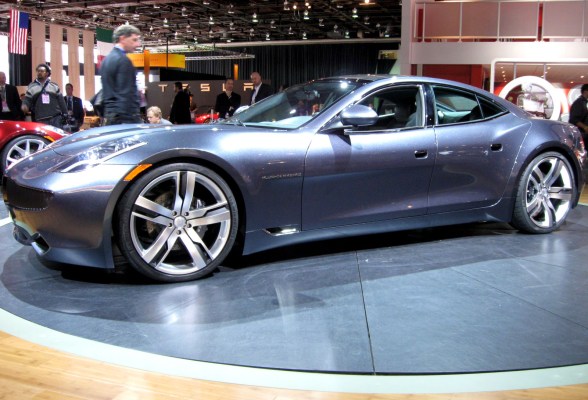In 2009, I went to what was probably the saddest auto show Detroit has ever seen. It was the January after the economy collapsed and auto makers were teetering on the edge of going bust. But there were a couple of bright spots in the hall filled with smaller car companies, where Tesla and Fisker Automotive both had vehicles on display. (There was also a Chevy Volt in the bigger hall.) The Fisker Karma was a plug-in hybrid luxury car with a high-tech solar panel on the roof.
But if it was tough for the largest auto manufacturers in the world in the years that followed, it was really tough for a new car company to launch. Fisker Automotive raised $1.3 billion and made almost 2500 Karmas before ceasing production and then declaring bankruptcy in 2013. In February 2014, Chinese industrial conglomerate Wanxiang bought Fisker Automotive for $149 million. (It had purchased EV battery maker A123 Systems, which had also filed for bankruptcy, in 2013.)
Company cofounder Henrik Fisker had already left, so the new company was rebranded as Karma. It made use of that billion-dollar investment by updating the technology of its new car, the Karma Revero, while retaining the crash-tested body of the Fisker Karma. “It gave us a huge jump on relaunching the car,” said Jim Taylor, Karma’s chief revenue officer, in a phone interview. “It’s a proven design that allowed us to make minor changes to it without huge risks.”
Karma kept a low profile on purpose while developing the new car. “We wanted to wait until we had a production plan rather than setting off huge fireworks without anything to show for a long time,” Taylor said. The company is pursuing a low-key approach overall; the Revero is a niche product, so production volume of the premium sedan at its southern California facility will be low.
Despite the anticipated reduction in costs of batteries and electric vehicle production over the past few years, “it’s still costly,” Taylor said. “[In the premium segment,] you have a better chance of recouping costs.” He also noted that cars like the Revero are an emotional purchase, not a practical decision. Often, cars in this segment are being added to a personal fleet of vehicles rather than being used as primary transportation.
Karma is staying quiet on the details of the new powertrain and software in the Revero, which will be revealed when the car is shown at an event on September 8. This launch has been the company’s focus up to now, with US deliveries to begin in the first quarter of 2017 and sales in Europe and China on the horizon. And there’s another car on the drawing board and very deep under wraps: “We can’t be a one-car company,” Taylor said.
